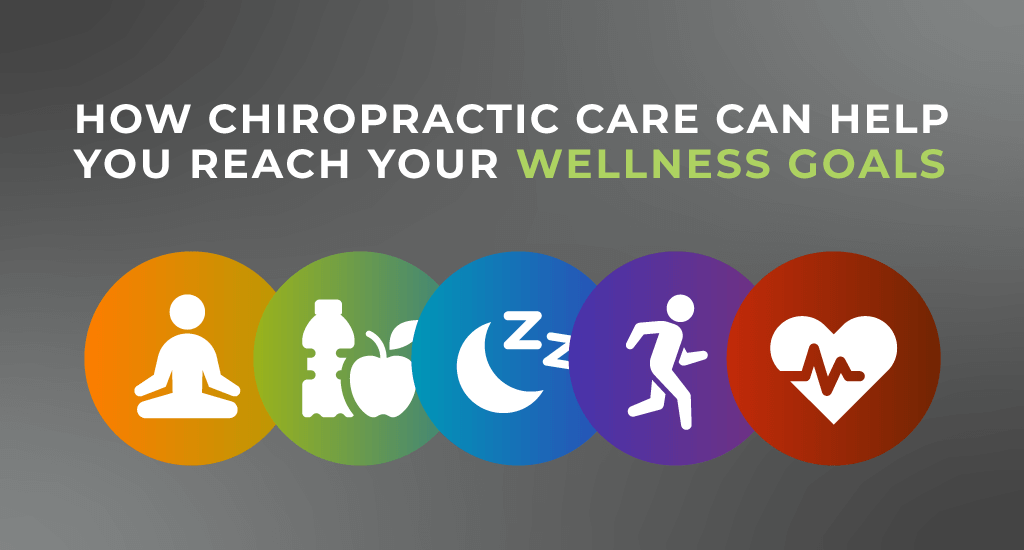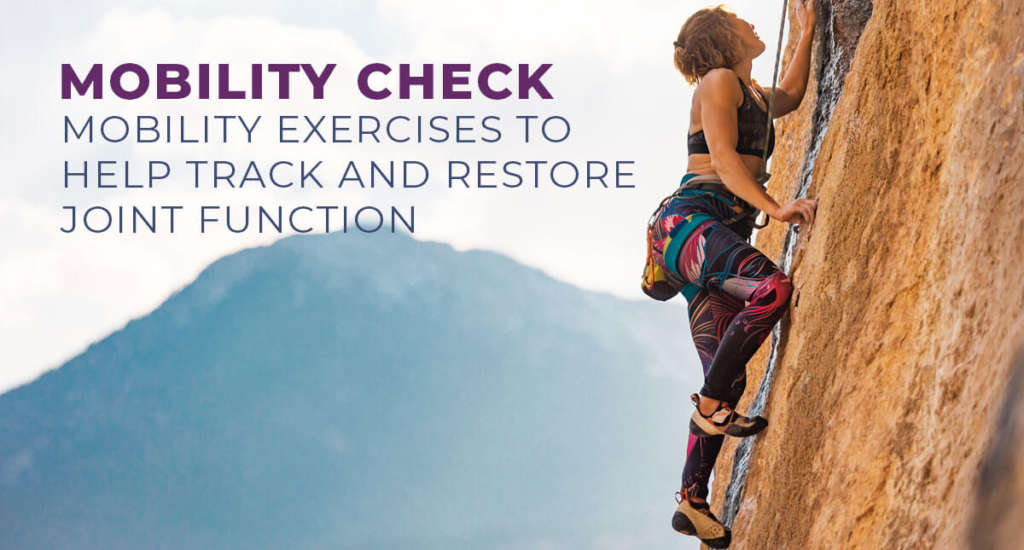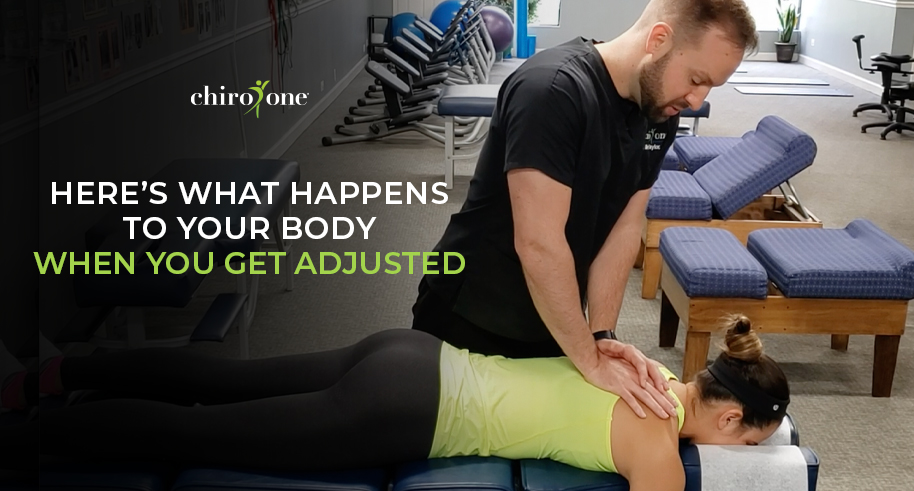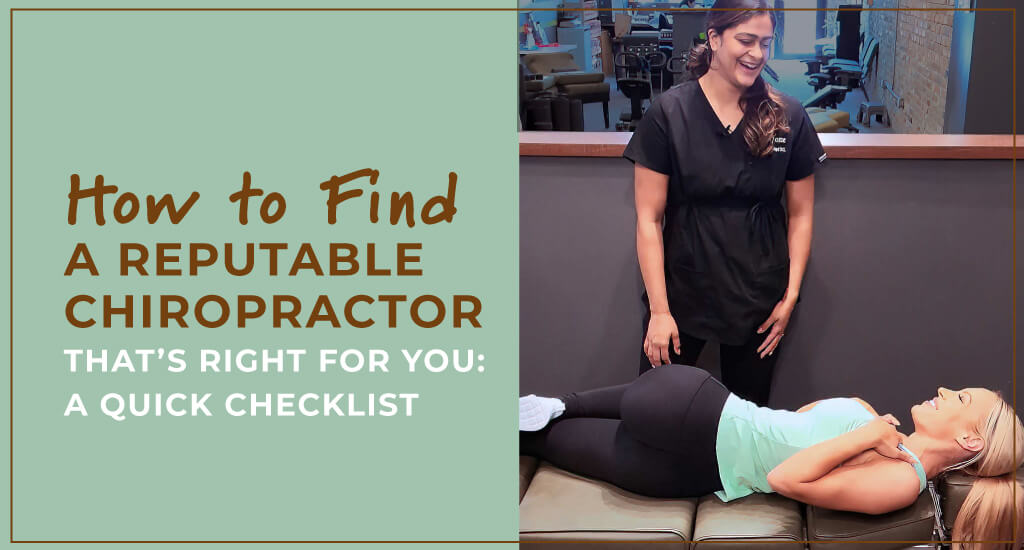Whether it’s behind the wheel, at the desk, or on the couch, Americans sit on average, 8 hours every day. You don’t need the National Library of Science to tell you that sitting too long isn’t ideal for your health. It can also be tough on your joints, leading to pain, stiffness, and ultimately, limiting your mobility.
But there is something you can do about it – and it doesn’t require a gym membership or a total shift in lifestyle. Adding mobility exercises can go a long way toward promoting your health and wellness. The first step? Understanding joint mobility and learning how to test yours.
How Joint Mobility Helps You Recover from Activity and Restore Function
What exactly is mobility? Not to be confused with flexibility — your muscles’ ability to lengthen — mobility is your joints’ ability to move through a range of motion. When your joints, muscles, fascia, and skin move in sync, they allow you to walk, run, climb, jump, reach and twist freely and easily without pain, strain or tension.
The more coordinated your joints, muscles, fascia, and skin become, the more motion they’ll be capable of — whether that’s work tasks, leisure activities or athletic feats. The longer you sit still, the less you’ll be able to experience your joint’s full range of motion, and the more you may disrupt your favorite activities and quality of life.
Over time, joint tissues can weaken, either through natural wear and tear, inflammation or microinjury. You may not even be aware of this gradual deterioration, or find you’ve simply become accustomed to dysfunction because of how slowly it can creep up on you.
Why Check Your Joint Mobility?
According to the CDC, 13% of American adults have serious difficulty walking or climbing stairs, which means their mobility is disrupting their lifestyle. Mobility limitations also make it more difficult to recover from activity or injury.
You can maintain your mobility and prevent joint dysfunction by making simple shoulder mobility exercises, hip mobility exercises, knee mobility exercises or ankle mobility exercises a part of your routine.
“Because your body and your mobility needs are unique, at some point you will need an assessment and personalized exercise protocol that takes both your weaknesses and your strengths into account. But gentle at-home exercises are a great start to mobility maintenance.”
A powerful way to improve your mobility is to strengthen the muscles surrounding your joints as much as possible — which can be done in the comfort of your own home, with mobility exercises. Regular mobility exercises can help you maintain your joint health well into middle age and beyond.
Uncovering the Root Cause of your Joint Pain
A personalized care plan consisting of gentle adjustments and active therapies can help you recover lost mobility, and help you maintain or improve existing levels. A Doctor of Chiropractic will assess your capabilities and limitations and then prescribe mobility exercises such as: shoulder mobility exercises, knee mobility exercises and hip mobility exercises for each body’s age, ability and health goal.
“Lack of mobility in one area of your body can lead to increased movement, stress, or injury in another, stressing joints and causing pain. Identifying different types of joint mobility and deficits will allow you to address these areas and work to improve them.”
Because the joint that’s causing the issue may not always be the one that’s aching, tingling or throbbing, joint mobility isn’t always easy to diagnose on your own. However, there are a few screening tests that can clue you into joint dysfunction before it does you in.
Chiro One Joint Mobility Check
Try these five joint mobility exercises to determine whether you’re recovering fully from your days’ activities and restoring the degree of mobility you need to power through your tomorrow. If you find one exercise position is difficult to achieve, work up to it gradually for 5 minutes every day.
Mid-Spine Twist: To Check Shoulder Joint Mobility
The three sections of your spine — upper (cervical), middle (thoracic), and lower (lumbar) have a different natural curvature. The mid spine enables rotation, which is the way you generate power for throwing and running. To determine whether tightness in this area is impacting the way you move:
- Sit in front of a door jam and cross your legs
- Hold a dowel rod at chest height with your arms crossed
- Twist to tap the rod on each side of the door jam without leaning forward, bending your spine or lifting your arms off your chest, like this:
If this position was difficult to achieve, begin working toward it gradually every day.
Overhead Reach: To Check Shoulder Joint Mobility
It’s easy to forget how often we need our arm and shoulder mobility throughout the workday and while playing just about every sport. Take a moment to check on yours.
- Lie on your back with your legs straight
- Lift your arms straight overhead
- Drop your arms back towards the ground without arching your back, lifting your chest or moving your arms away from your head like this:
Leg Raise: To Check Hip Joint Mobility
Hip mobility exercises are vital for walking, climbing and running. To check yours:
- Lie on your back with your arms at your sides
- Lift one leg towards the ceiling while keeping both legs straight and the opposite leg on the floor
You have excellent mobility if you can lift your leg to a 90-degree angle while keeping your other leg on the floor, like this:
Inability to bring the legs forward will limit your knee drive while running. Slowly work your way toward this position.
Hip Extension: To Check Hip Joint Mobility
To test the critical ability to extend your hip during reaching, jumping and sprinting:
- Lie on your stomach
- Squeeze your glutes
- Lift one leg off of the floor without rotating or arching your back ,
like this:
How’d You Do? Your Joint Mobility Assessment
Were you able to do:
- 5 out of 5?
Congrats – you’re a Mobility Master!
- 4 out of 5?
You’re primed to be a Sports Enthusiast
- 3 out of 5?
You’re ready to be a Shaker & Mover
- 2 out of 5?
You’re a Home Stretch Champ
If you were able to hold one or none of these positions, you may want to get some help managing your mobility ASAP.
How Chiro One Can Help You Recover and Restore Your Mobility
Your Chiro One DC will thoroughly assess your mobility, then prescribe and supervise the three types of personalized mobility exercises for your unique strengths and weaknesses:
- Low-impact mobility exercises: How you move is just as important as how much you move. Overly strenuous exercises can wear down joints in some people, while low-impact mobility exercises — like walking, biking, and swimming — can help prevent future joint issues as well support joints that are already suffering some dysfunction.
- Muscle strengthening mobility exercises: Your muscles support your joints, so strengthening your muscles protects your joints from overuse. Research has confirmed that reasonable strength-training exercises can help keep joints working as they were meant to.
- Range-of-motion mobility exercises: Range of motion is a measurement of the distance and direction a joint can move. Although shoulder and hip joints lose about 6 degrees of flexibility per decade after age 55, maintaining a healthy range of motion earlier in life may help push back that number, allowing you to enjoy optimal function longer.
Of course, your first step is to find a reputable chiropractor that listens and collaborates with you on a personalized care plan that considers your age, medical history and goals.
Discover How Chiro One Mobility Exercises Can Help You Restore and Recover
Check in with your nearest Chiro One doc at one of our welcoming open-plan clinics across the country. They’ll perform a thorough exam to investigate the root cause of your pain, then personalize your care plan — a combination of gentle chiropractic adjustments and active therapies.
Find a Chiro One doctor near you
Want to help someone you love find a chiropractor that’s right for them by meeting one of ours during a complimentary consultation?
Receive a thank you gift for referring them here.




